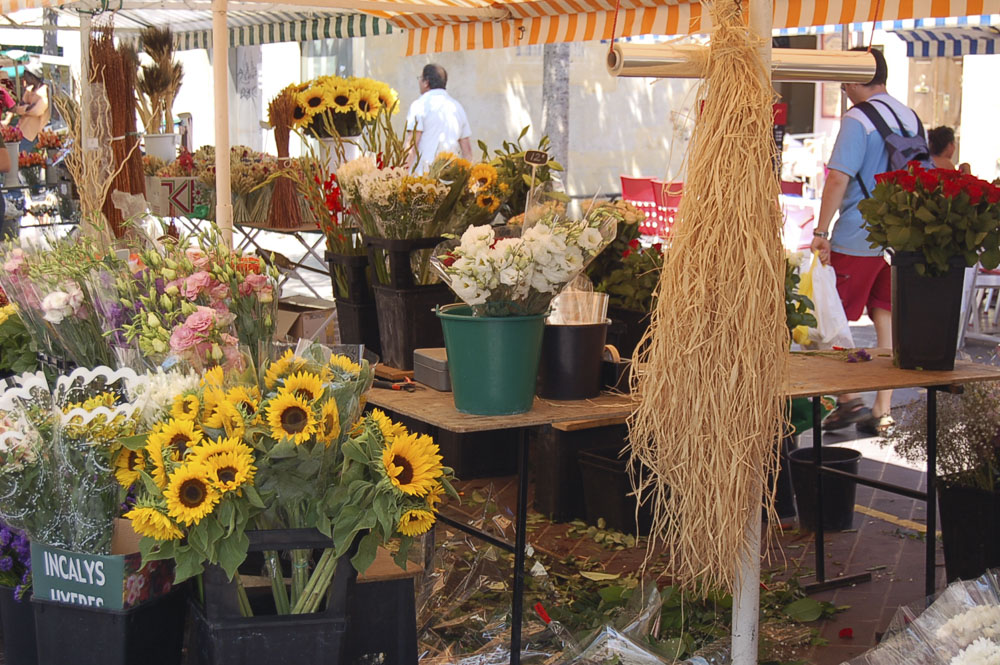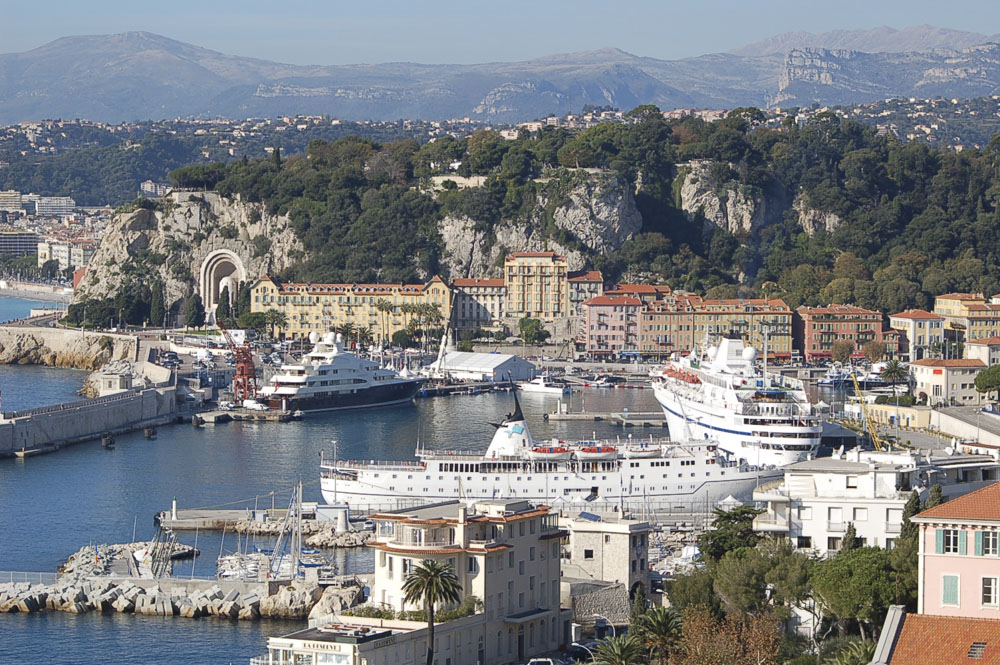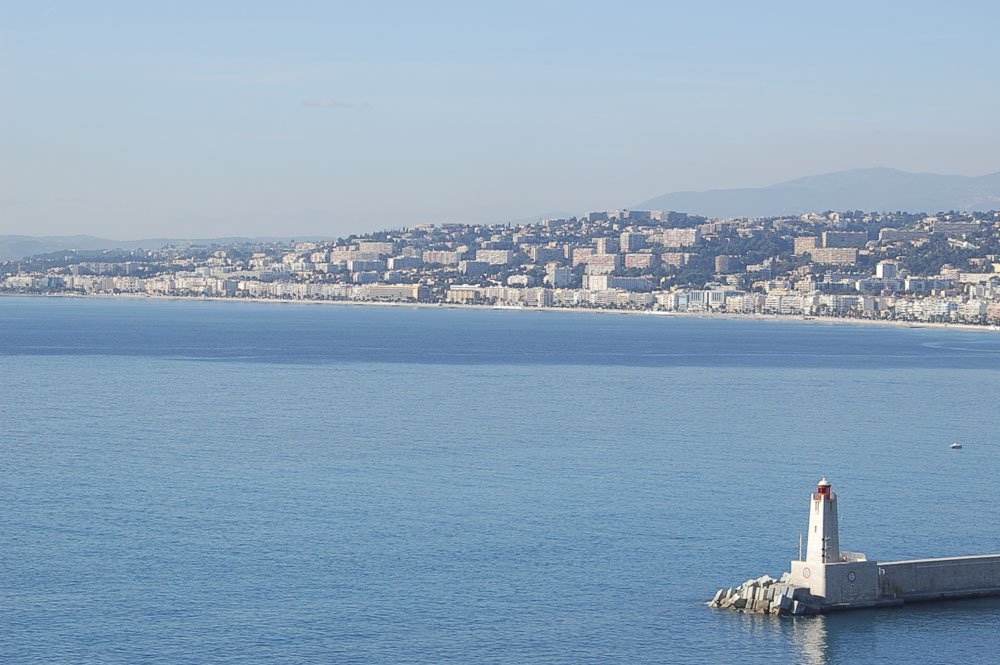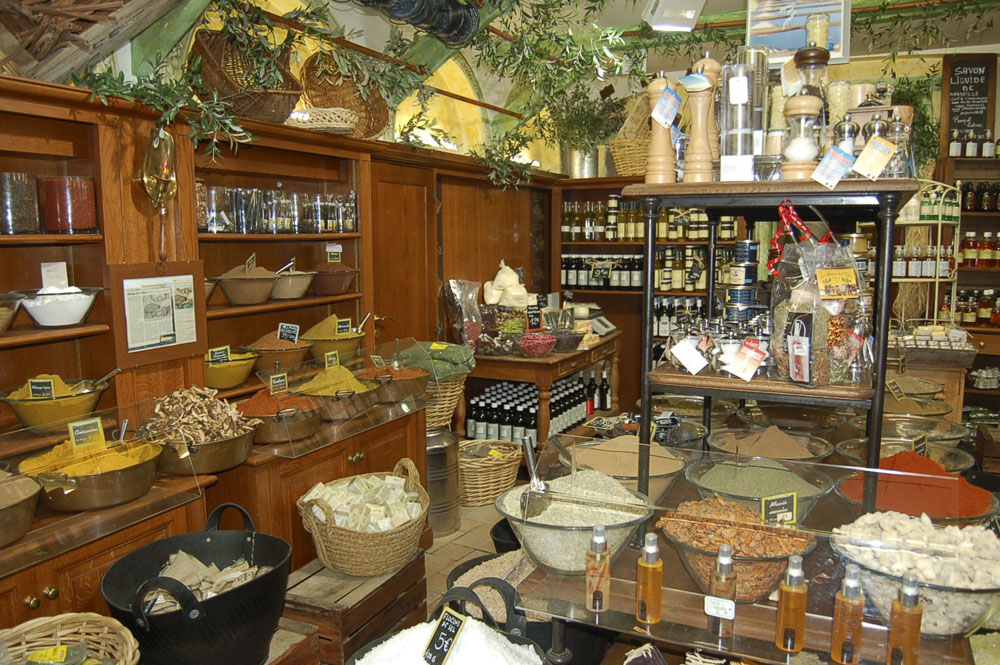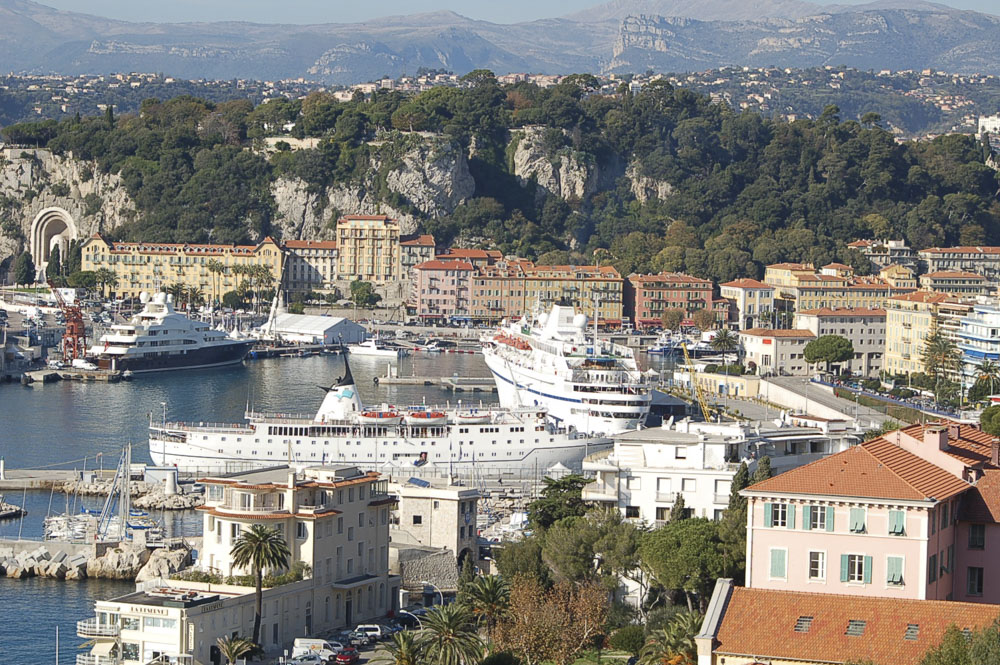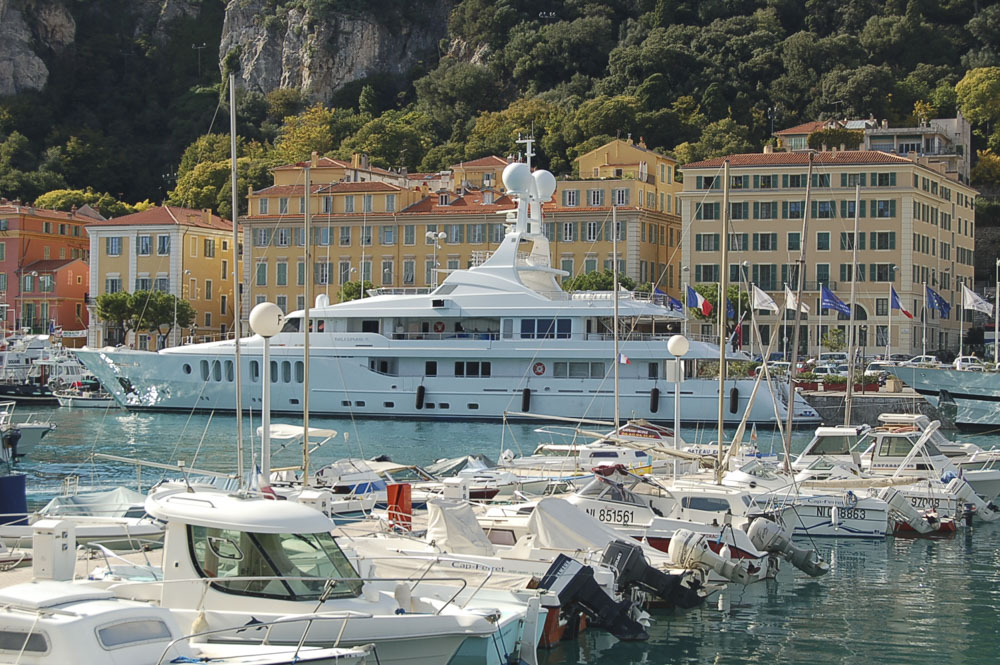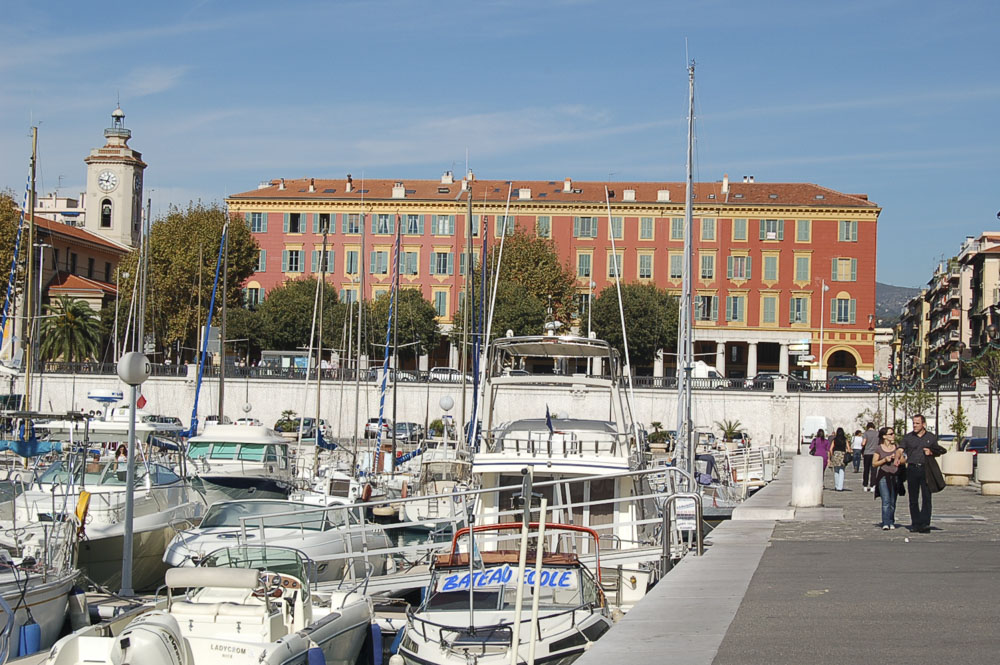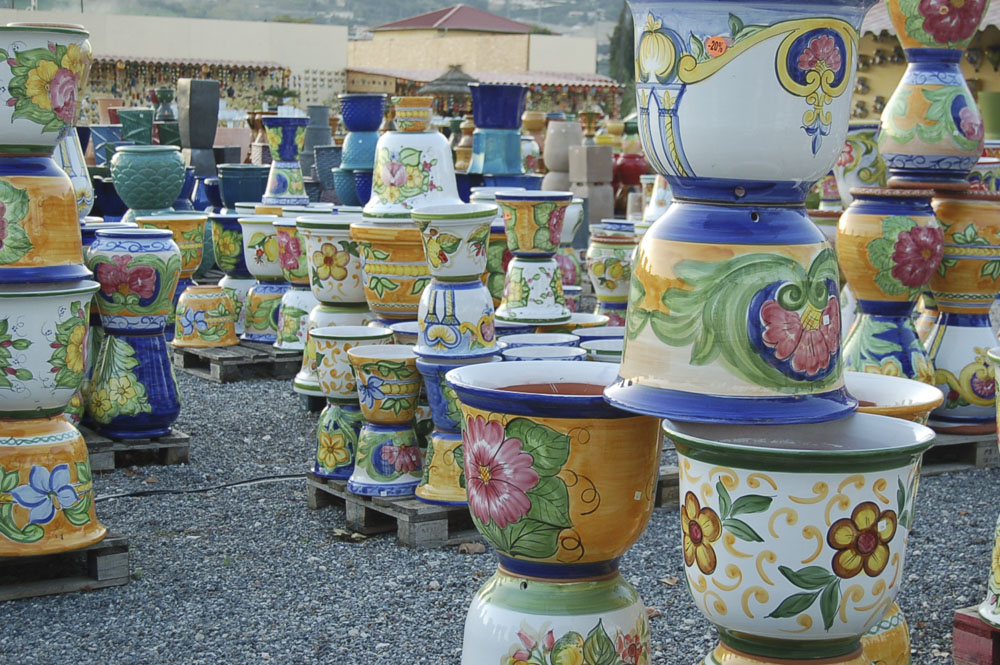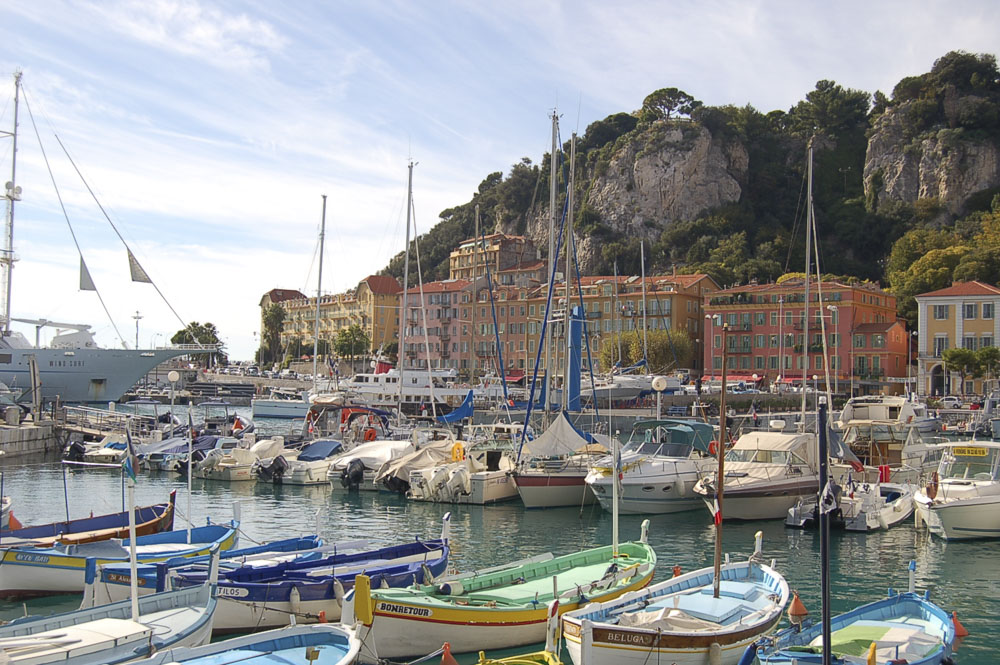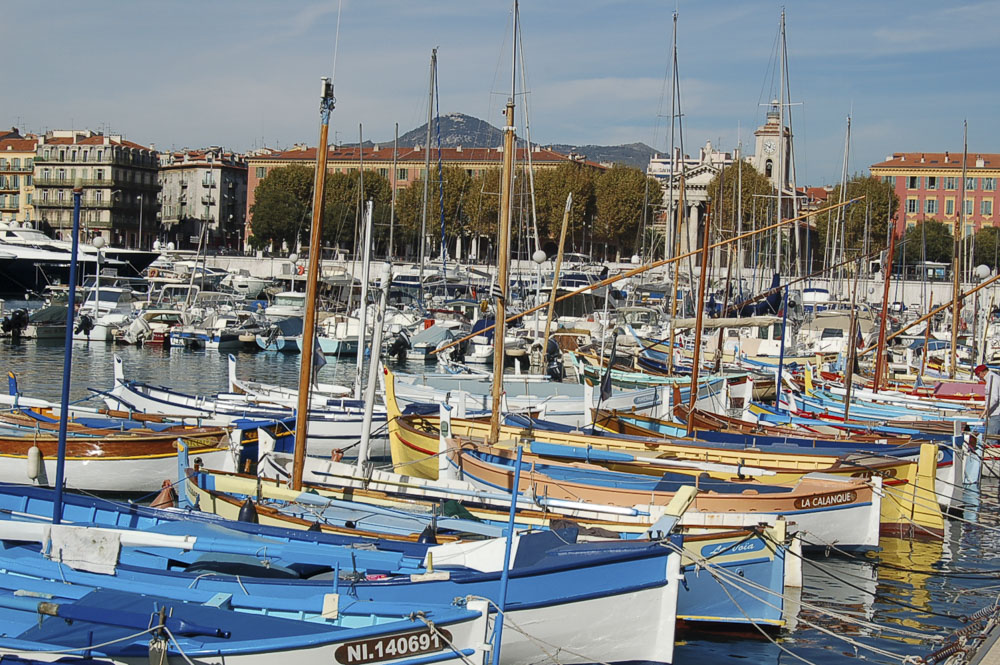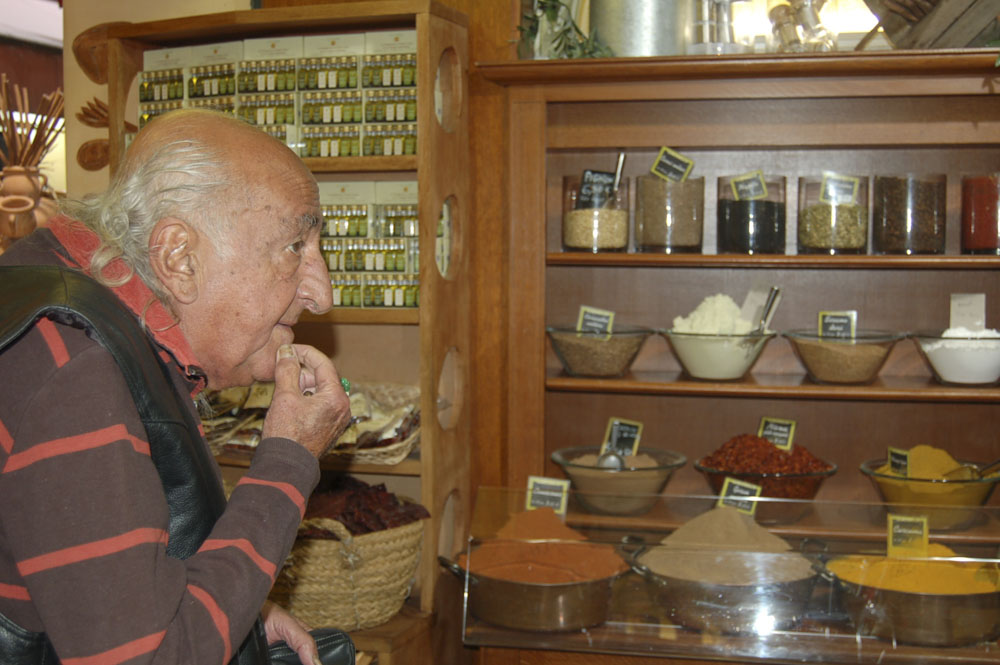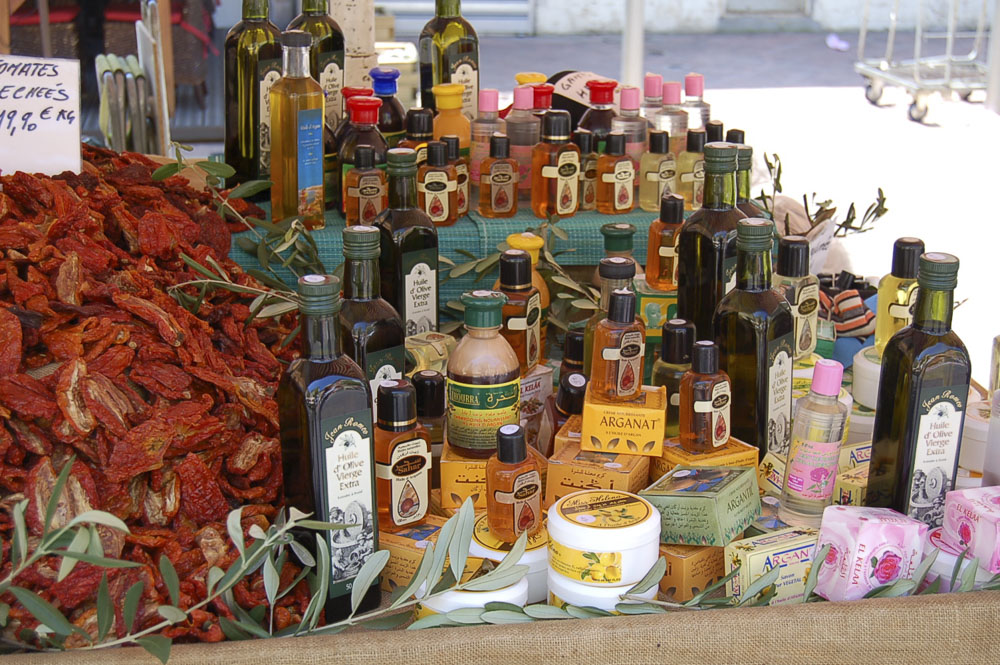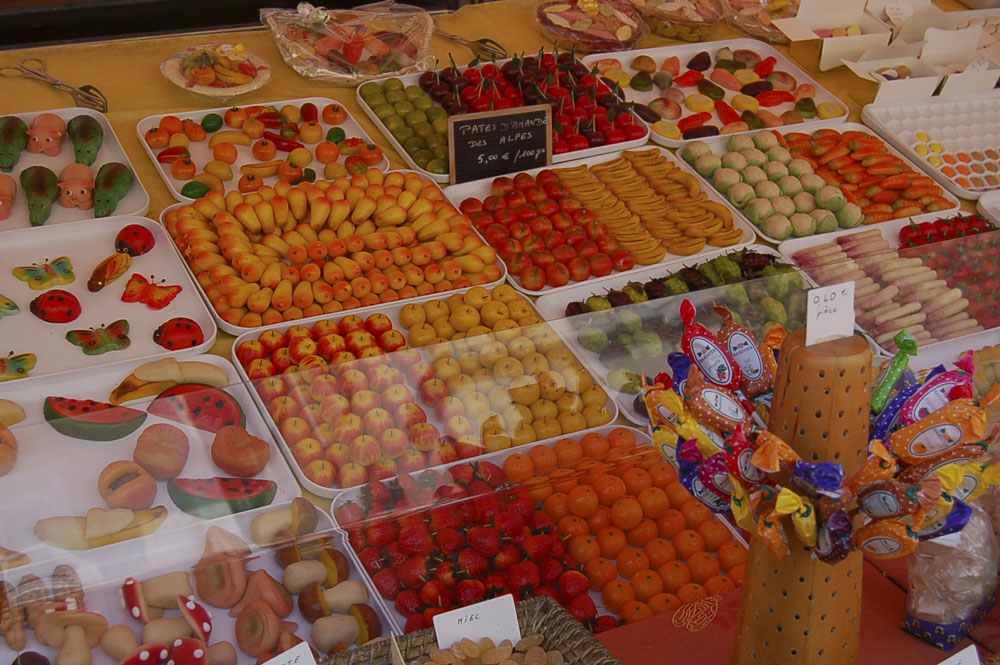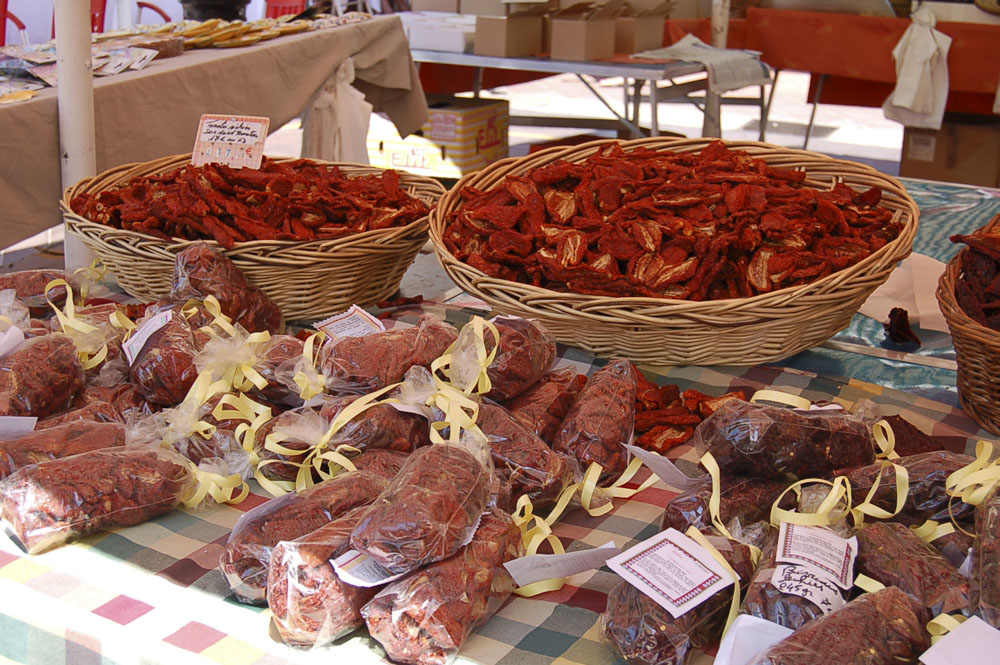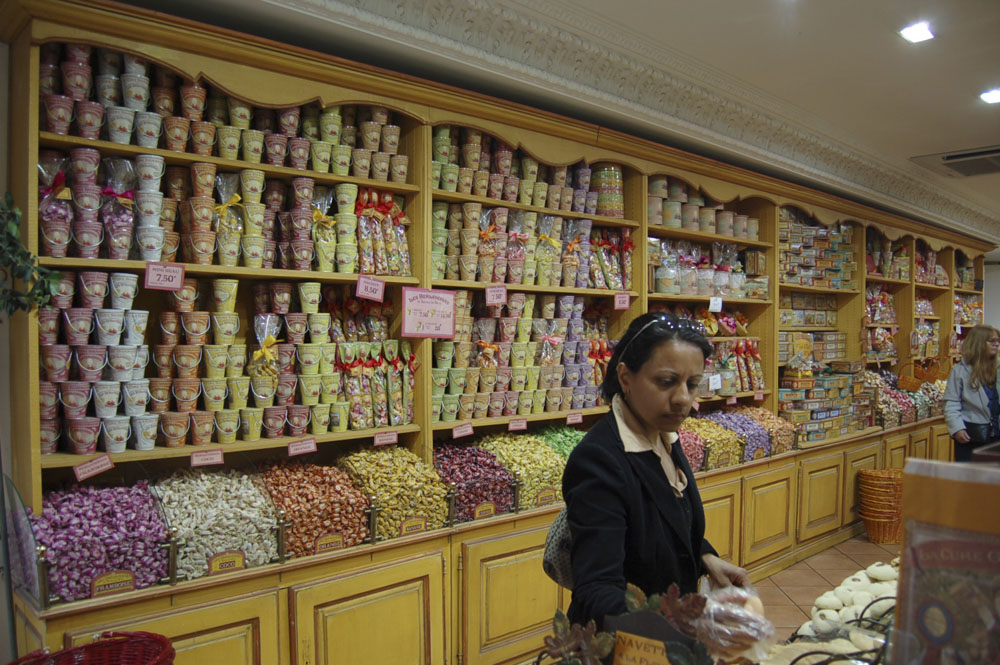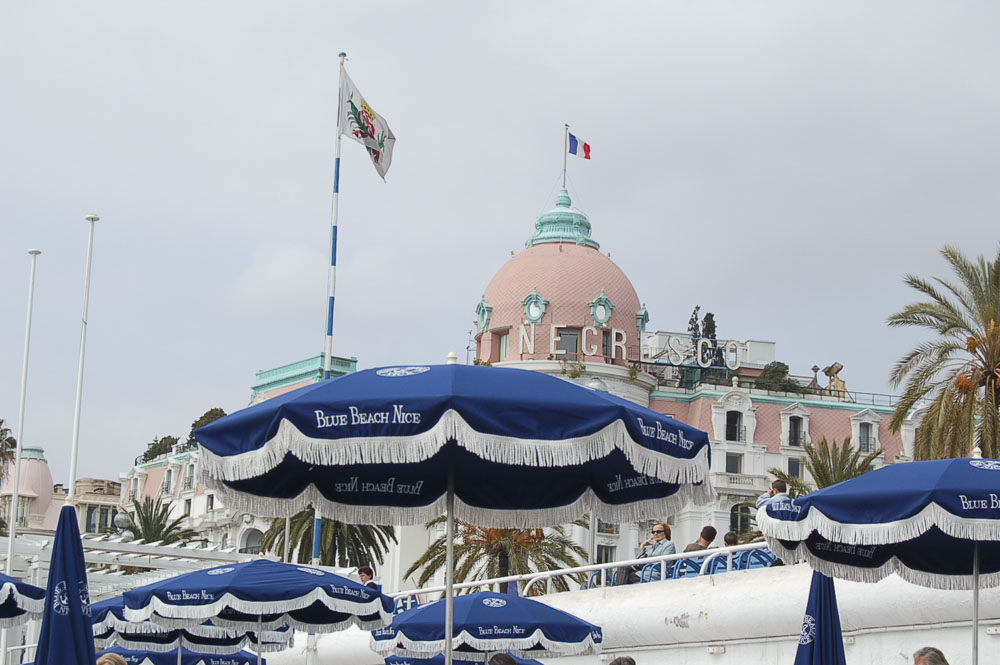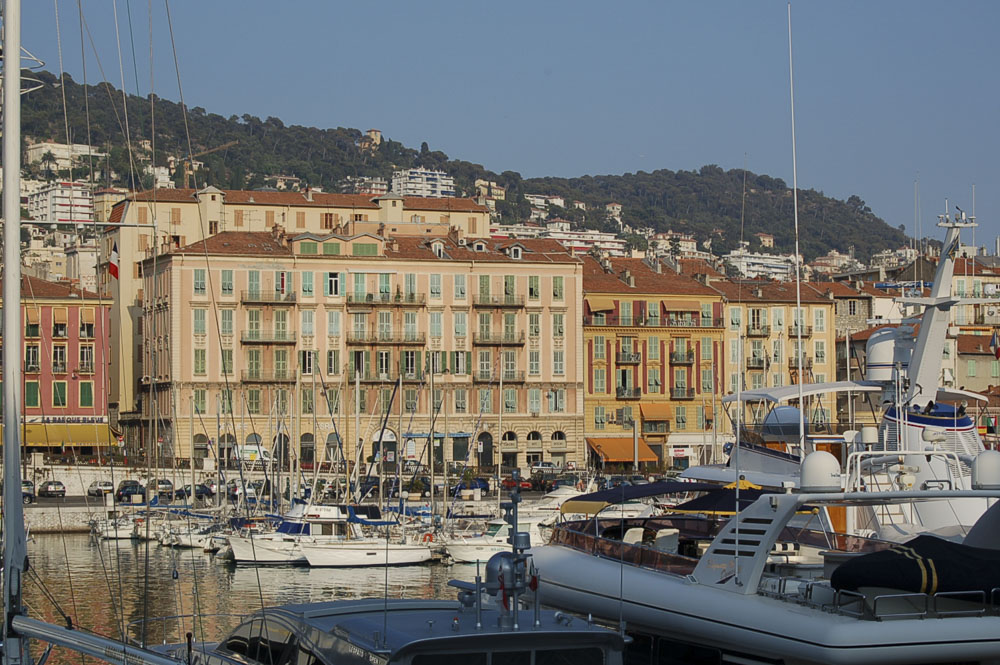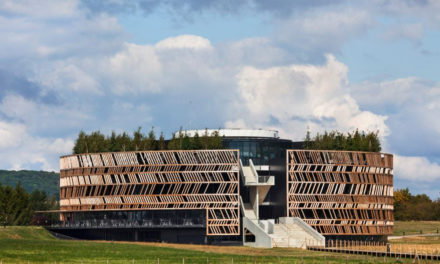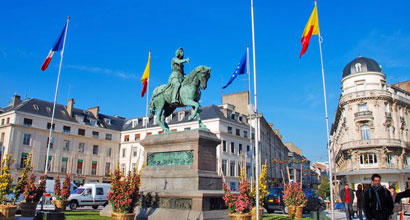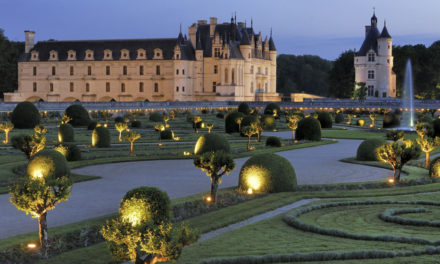Images – Copyright Informationfrance.
Nice is the fifth largest city in France and the capital of the Alpes Maritimes. With a population of over 460,000 and the second busiest airport in France, the city that was once dominated by summer tourism, is now a fully functioning metropolis all year round.
It is now possible to reach Nice by train from London on the new TGV Méditerranée changing in Paris or Lille. In an attractive setting just twenty five miles from the Italian border, Nice has only been part of France since 1860. The city combines both the best of Italian and French architecture. The English also played a large role in the development of Nice.
The Promenade des Anglais was built by the English in 1822 and many of the hotels there still have names such as The West End and The Westminster. The promenade is the natural place to begin a tour of Nice which, despite its size, is very much a city to be discovered on foot. The Hotel Negresco which was built in 1912 dominates the promenade and is as much a landmark in Nice as the Carlton Hotel is in Cannes.
The stony beach runs the full length of the promenade and is kept exceptionally clean. A number of art museums and galleries are located in the streets running off the promenade and it’s well worth exploring this area.
At the Eastern end of the promenade, just before the start of the old town is the Jardin Albert I, a beautiful garden with ornate fountains which is used frequently for concerts.
Book a Hotel in Nice
The Market in the 'Cours Saleya'
Walking north east through the gardens, one comes to the Place Masséna which is described as the centre of Nice. This large square is surrounded by Italianate red facades with vaulted arcades and feels more like Turin than the South of France.
Running North of the Place Masséna, the Avenue Jean Médecin is the main shopping street in Nice. It is lined with plane trees and is home of Gallerie Lafayette department store, a large shopping centre called Nice Etoile, as well as a branch of Marks and Spencer.
For more upmarket shopping, the pedestrianised area around the Rue Masséna and the Rue de France is where one will find shops such as Chanel and Louis Vuitton. This area is also full of cafes and is a great place to stop for a drink and watch the world go by.
East of the Place Masséna, the Avenue Félix Faure and the Boulevard Jean Jaurès run parallel to each other, separated in the centre by wonderful fountains and gardens. This area is built on top of the River Paillon which runs through the centre of Nice and is the border between the modern city to the north and the old town to the south.
The Museum of Modern and Contemporary Art was constructed in 1990 and its futuristic design attracted controversy at the time. It features works by the artists of the New School of Nice, in particular Yves Klein. The more traditional Musée des Beaux Arts contains works by Monet, Renoir and Picasso. Just west of the railway station, the Russian orthodox cathedral built in 1912 is the largest outside Russia.
The Port
Old Nice is very much the heart of the city. Small, dark, narrow streets filled with tall houses separated by pretty, colourful squares. Balconies are covered in flowers and washing hangs across the streets. The old town was once very run down but is always being restored.
One building to particularly benefit from restoration is the St Réparate Cathedral. The cathedral situated in the Place Rossetti was built in 1650 and is named after the patron saint of Nice. It has now been painted in wonderful, vibrant colours as have many of the old town’s public buildings and churches.
Streets that a few years ago no one would go near are now full of small specialist shops selling antiques and local specialities. Between the old town and the sea, the Cours Saleya is the location of Nice’s main market. Every day except Monday, this narrow pedestrianised square is full of stalls selling food and flowers. On Mondays the olives and roses are replaced by antiques, as dealers come from all around to sell anything from old phone cards to furniture.
There is also a fish market six days a week in the Place St François.
Colline du Chateau
The whole of Nice is dominated by a three hundred foot hill between old Nice and the port. It is known as the Colline du Château despite the fact that the last castle on this site was demolished in 1706. One can reach the top of the hill on foot or for the less energetic, there is a lift. Once at the top, take the time to walk around the beautiful gardens to see what has to be one of the best located cemeteries in the World. The views are simply breathtaking, over the entire city to the west and the port to the east. Nice’s port is very much a working port, full of container ships as well as regular ferry services to Corsica.
Cimiez
Just north of the centre, the hillside suburb of Cimiez is just as interesting as Nice itself. Cimiez was built as a Roman town above the Greek city of Nice.
There are Roman baths as well as a Roman theatre which is used for the World renowned Nice Jazz Festival in July. Cimiez is a mainly residential area, full of exquisite belle epoque villas and “Palace” hotels such as the Regina Palace built for Queen Victoria in 1897.
Other places of interest include the Franciscan Monastery and an Archeology Museum full of Roman Artifacts. The Matisse Museum and the Chagall Museum are also well worth visiting. The English American Library which contains over 20,000 books, is also worth a visit just to read the newspapers, magazines or rent a DVD.
Nice Information and Travel
Nice is in many ways the envy of the rest of France. Public transport is excellent as are the city’s universities and schools. The streets are cleaned regularly so they have little chance of geting dirty.
Below the city, a huge network of inexpensive underground car parks means that Nice does not have the parking problems of other cities its size. The residents of Nice celebrate their love of the city with a Carnival in February which attracts huge numbers of visitors. The town has a huge cultural programme all year round with concerts, exhibitions and plays most of which are free.
Getting to Nice
By Car:
Nice is situated close to the A8 motorway that links Genoa (a 193km drive) to Marseille (190km). The A8 is well connected to the N98 coastal road which links Monaco (23km) to Cannes (35km) and to the A7 (part of the ‘Autoroute de Soleil’) which runs between Lyon (470km) and Marseille.
The journey between Nice and Lyon takes approximately 5 hours, and those proceeding to Paris (931km from Nice) should expect to spend another 4 hours driving the length of the A6 (which constitutes the other half of the ‘Autoroute de Soleil’).
By Train:
Nice’s main railway station (Gare SNCF Centrale) is located to the northwest of the town centre on l’Avenue Thiers. The high-speed TGV links Nice to Paris (approx 5.5-6.5 hours), Lyon (approx 4.5 hours) and Marseille (approx 2.5-3.0 hours) amongst others.
Local services connect to the region’s other major towns including Aix-en-Provence, Antibes, Avignon, Cannes, Hyères, Menton, St Raphael and Toulon. Tickets and timetables for all of these services are available online from the SNCF.
If you are planning to take your car to Nice then you would be well advised to consider the benefits of Motorail. Although the French Motorail service has been discontinued, a new weekly service, operating from s’Hertogenbosch (in the Netherlands) to Avignon & Fréjus will allow motorists to take their cars to the South of France without the hassle of a long drive. The service is operated by www.autoslaaptrein.nl. s’Hertogenbosch to Avignon & Fréjus motorail runs on Fridays, loads cars 14:00-16:30, departs s’Hertogenbosch 18:00, arrives Avignon 07:35. Fréjus & Avignon to s’Hertogenbosch motorail runs on Saturdays, loads cars 16:00-17:45, departs Avignon 19:16, arrives s’Hertogenbosch 08:25.
By Coach:
Nice’s principal bus station is the Gare Routière, which is located on the Place Massena. An international coach service run by Eurolines links Nice to major destinations all over Europe, travel times are often long but offer the best value for those travelling on a budget. Local coach services are operated by Les Lignes Express Régionales (Regional Express Line).
By Aeroplane:
Nice Cote d’Azur Airport is one of France’s busiest and best linked airports. All of the major airlines operate from here including several low-cost carriers.
The airport is situated just 7km from the town centre and is easily accessed by both public and private transport. Buses 98 and 23 run to central Nice throughout the day, and SNCF trains run every 45 minutes.
Given the short distance, taxis are relatively inexpensive and if you wish to travel in real style you might opt for a helicopter transfer.
Hélisécurité operate helicopter transfers from Nice to Cannes, Nice to Monaco, and Nice to St Tropez.
Office of Tourism
NICE OFFICE DE TOURISME **** ET DES CONGRÈS
5 promenade des Anglais – BP 4079,
06302 NICE Cedex 4
Tél : +33 (0)892707407
Copyright text : Sarah Francis 2011
Copyright Images : Informationfrance 2011

